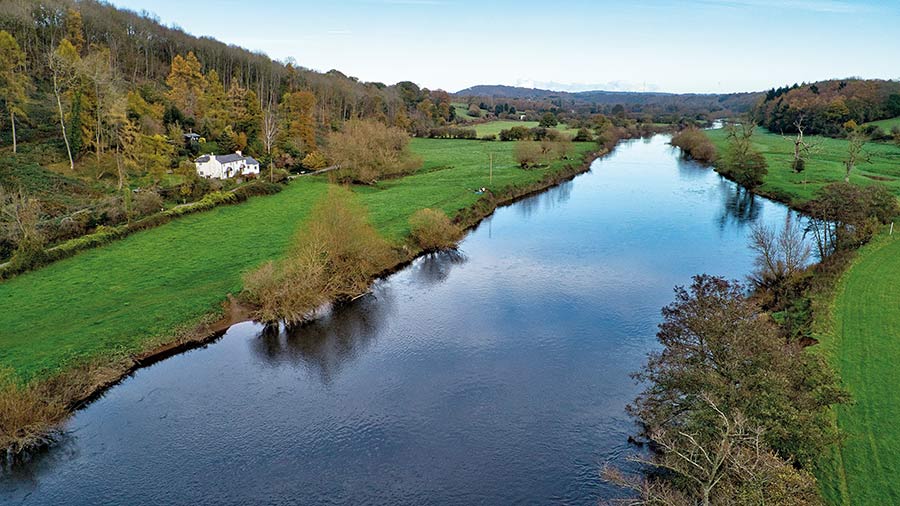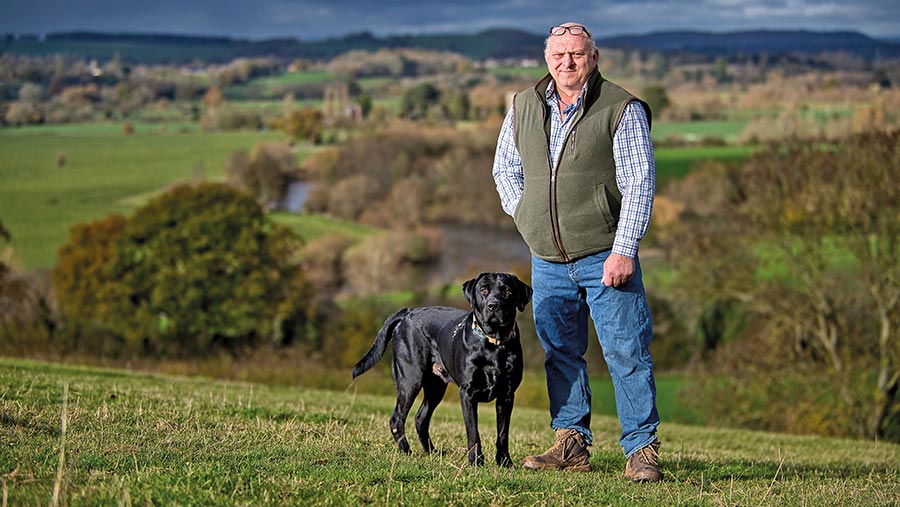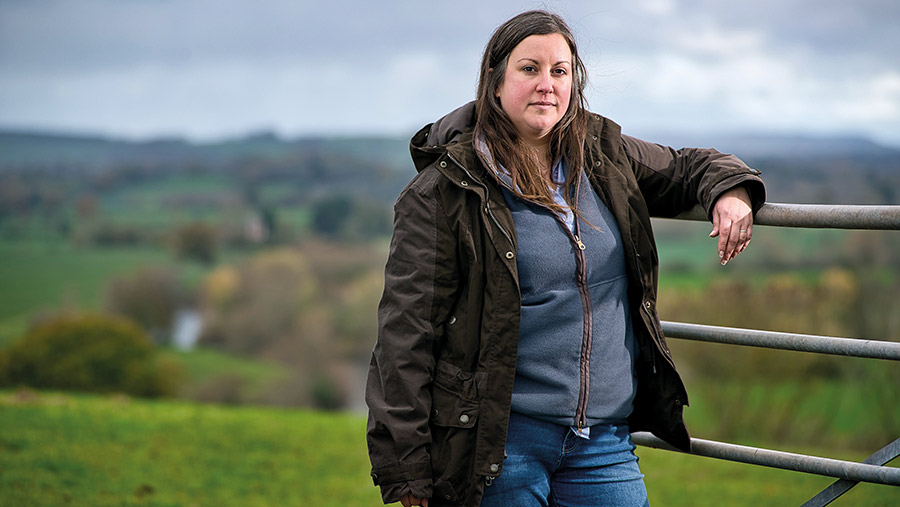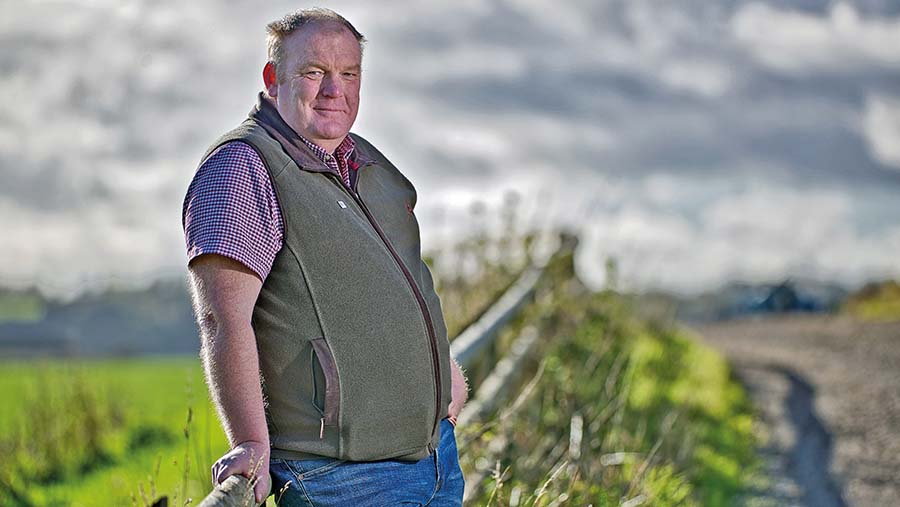Local farmers lead clean up of phosphate polluted river
 © Richard Stanton
© Richard Stanton Farmers are leading the way in a joint effort to clean up the River Wye in Herefordshire – reducing phosphate pollution by changing farming practices.
In just over a year, lasting solutions to the high phosphate levels in the river have been identified. A timescale for phosphate reduction has been agreed, thanks to the willingness of businesses, retailers and government agencies to work together.
See also: Climate change will worsen farm water pollution, study shows
Collective approach
This collective approach has added to the momentum originally created by the local farming community, which is keen to reverse the deterioration of the River Wye and improve the ecology of the area.
As Fownhope-based arable farmer and instigator Martin Williams explains, recognising that there was an issue in the catchment and accepting there would have to be an element of compromise were two key steps in making progress.
A lack of data on the agricultural side and a prevalent blame culture meant a certain amount of “sword-fighting in the dark” to go the true picture, says Mr Williams.
“Over the past 18 months, there have been many events organised to discuss the river and plenty of dialogue with relevant bodies,” he reveals.
“As a result, we now have the awareness and co-operation that we need to change things for the better.”
There is also a route map for achieving results. Along with a new phosphate audit tool that’s being developed, it will support farmers and businesses in making better-informed decisions.
What’s the problem?
The River Wye rises in the Cambrian mountains and flows for 152 miles, making it the fifth longest river in the UK.
It is one of the most protected rivers in the UK and is under site of special scientific interest and special areas of conservation status.
The water quality of the Wye has been a cause for concern for some time and its ecological status is described as “unfavourable – recovering”.
The current problems are centred on algal blooms, that grow quickly in hot weather. These are exacerbated by levels of phosphate pollution, which originate from numerous sources.
In addition, lower river levels reduce the oxygen content of the river, killing aquatic life and affecting water quality.
More than manure
While the widespread use of poultry manure as a fertiliser was originally blamed for the situation, the issue is more complex than that, with numerous sources, including water treatment facilities and other farming activities, also contributing to the pollution.
“Back in the summer of 2021, the national press was running articles vilifying the farming community, especially broiler production, for the state of the river,” says Mr Williams.
“Something had to be done so farming had a voice and the situation was better understood. Only then could we move forward.”

Martin Williams © Richard Stanton
The first exploratory meeting that he organised with the help of the Wye and Usk Foundation was well-attended and included representatives from farming, food processing, research institutions and environmental organisations.
“Once all the facts and figures were presented, it was clear that livestock manures, biosolids and digestate were contributing as much as 75% of the excess phosphate in the River Wye, with the catchment running at a surplus of 2,000t of phosphate a year.
“From a farming point of view, having access to nutrient-rich manures had gone from being a blessing to being a curse,” says Mr Williams.
Importantly, the tone of that meeting meant that developing workable solutions became the focus, rather than each party apportioning blame for a long-term issue.
Research findings
During the initial meeting, Shane Rothwell from Lancaster University reported the findings of rephOKUS, a large research project on phosphate use in the food system.
This confirmed that phosphate leakage from land to water was also occurring.
Not only did this blow the myth that soil phosphate is immobile, the work also showed that the phosphate loadings were too much for the sandy and loam soils to retain.
“Livestock dominate the phosphate flows in the Wye catchment,” says Dr Rothwell.
“The main movement of phosphate is in the manures, which is why changing how they are used can help, but there’s also a huge reserve of phosphate in Herefordshire soils.”
It was the catalyst that was needed for change, recalls Mr Williams, as it showed that soil input was exceeding phosphate demand by 30%, leading to its accumulation every year.
“It got us all thinking about our soil indices and our land management practices,” he says.
“If the soils can’t hold the phosphate that’s being applied, there’s an obvious need for a different approach. Ultimately, farmers are responsible for what they put on their land.”
Poultry industry
Getting the poultry industry to play its part in addressing the problem was essential, says Kate Speke-Adams, formerly of the Wye and Usk Foundation, as the use of poultry manures as fertiliser can be a risk.
“If it’s not applied in the right way and at the right time, some of the excess phosphate content in these manures can find its way into the water through soil diffusion.”
Avara Foods – one of the UK’s largest producers of poultry – was willingly involved in the discussions from the start, as almost half of the company’s production comes from its Hereford operation.
It agreed to take full accountability for the phosphorous used in its processes, from changing the chickens’ diets to enhanced manure management and new destinations for chicken litter (see “Avara’s ‘bold plan’ for reducing pollution”).
Since then, it has been encouraging to see work done by egg packer Noble Foods, says Ms Speke-Adams.
The company has been working with her colleagues to deliver one-to-one farm advice and develop solutions to pollution, such as building wetlands.
“Free-range egg production units can be hotspots for phosphate,” she says.
“Where they are well-established, soil indices of 5, 6 and 7 have been recorded.”
In the same way, Stonegate Eggs is engaging in the efforts being made to prevent nutrient and sediment pollution, reflecting that all parts of the supply chain are intent on making improvements.

Kate Speke-Adams © Richard Stanton
Further up the chain are the retailers, who are also involved and putting pressure on others to step up.
Tesco, which has signed up to the Courtauld Commitment, is now part of the collective action with regard to sustainable water use and water quality.
“Tesco recognising that the catchment is saturated and that it can play its part in getting change to occur has really picked up the pace,” says Ms Speke-Adams.
“If their suppliers are expected to be transparent about their practices and look for ways to improve, it helps to change old habits.”
Avara’s ‘bold plan’ for reducing pollution
The supply chain for Avara Foods covers 120 farms in the Wye catchment area. These farms jointly produce about 160,000t/year of poultry manure, or just over 3t/week.
Each one is an independent business, supplying into the Avara operations in Hereford and nearby Newent on long-term contracts.
The water pollution risk arises when farmers decide to use the manure on their own land or sell it to third parties as fertiliser.
Taking full accountability for the phosphorous used in the company’s processes is the right thing to do and part of its wider environmental responsibilities, says John Reed, Avara’s director of agriculture, who has committed to other initiatives over the next two years.
“We have already identified four potential destinations for poultry litter,” says Mr Reed (see “Where does all the poultry litter go?” below).
“It makes sense to use existing infrastructure, where possible, while establishing best practice for manure management.”
Wider action
As word spread, other organisations have added their support and accepted the challenge, she notes.
Welsh Water has invested in its sewage treatment infrastructure and given grants to farmers to support water quality, while Herefordshire Council – which has calculated that the economic impact of the planning moratorium in the catchment is £200m – has been instrumental in agreeing on progress.
A Landscape Recovery bid, put together with the help of the Wye and Usk Foundation by 14 landowners and covering 1,100ha of farmland, was unsuccessful – but the group was not deterred and will continue to support changes to agricultural practices.
At the same time, the Environment Agency, which is working with a range of partners in the Wye catchment to improve water quality, carried out 136 farm inspections last year.
Of these, 101 were to high-risk fields and sites, while the others were to anaerobic digestion plants and poultry units. Regulatory powers were used in 36 instances and 10 warning letters were issued.
There has also been a move to “export” litter out of the catchment, with main contractor Gamber Logistics now moving about 20,000t away from the source to counties in need of the nutrient, to alleviate the pressure.
“There is a plan that everyone has signed up to and we are seeing a sea change in behaviour,” says Ms Speke-Adams, who is now with the Herefordshire Rural Hub.
“But there are 2,000 farmers in Herefordshire, so we want to see more of them involved.”
Where does all the poultry litter go?
Current model
- Heat/power source Used in on-farm litter burning technologies.
- Digestate Used in existing anaerobic digestion (AD) plants, with limits on digestate use.
- Manure Spread on farmland subject to enhanced manure management standards, with third-party approval and auditing.
- AD solutions Sold on to an enhanced AD plant, creating a circular economy for end products.
Future model
Over the next two years, Avara will be taking further action, says John Reed, the company’s director of agriculture. Working with farmers, there will be a transition to a different model for poultry manure that is commercially viable and sustainable.
- Data Produce verified, accurate manure production and phosphate levels data for each farm in the catchment.
- Feed development Continued work on reducing phosphate in chicken diets. Levels have already come down by 27%, without compromising welfare or quality standards.
- Further AD solutions Support for the development of solutions that create a circular economy, by converting litter into renewable energy, carbon dioxide, biofuel and fertiliser. This will be done by supplying 100t/week to an existing AD plant outside of the Wye catchment and increasing that to 600t/week in 2023, until two new local plants are ready. These new plants will be in Herefordshire, and Avara will assist with the planning process as well as purchasing some of the resulting value stream.
- Manure management Robust practices for manure use in the catchment will be developed. An independently assured and audited management framework based on agreed practice will have to be followed by any farm using poultry manure on their land. Also, farms burning litter on-site must demonstrate that the ash is exported out of the catchment area, while AD plants must show that digestate use is in line with approved processes. Farms selling chicken litter will need to show that it has gone to one of the three enhanced AD plants.
Avara is focusing on long-term actions that are sustainable and create value, says Mr Reed.
“We’ve recognised that we can play a role in the condition of the Wye,” he adds.
“These are ambitious goals, but they will help to reduce the carbon footprint of the supply chain and improve the ecology of the area.”
Case study: Clay Estates

Mark Wood © Richard Stanton
Mark Wood, farm manager at Clay Estates in south Herefordshire, was set a challenge by his new employer when he started his job 20 years ago.
His most urgent task was to find ways of keeping soil in the fields, rather than seeing it running out of the gates and heading towards the river after heavy rainfall.
His starting point was to improve soil structure by increasing its organic matter content, as well as changing the rotation so that potatoes were grown less frequently and only on specific sites.
“Building in some resilience and doing things differently has really helped,” says Mr Wood.
“As well as improving the water-holding capacity of the soils, it expanded our working window and reduced soil damage.”
Recognising that there was variability in the estate soils, Mr Wood had all of the fields tested so that he would be able to variably apply fertiliser according to soil zones and crop requirements.
Aware of the declining state of the River Wye, he also took a gamble and decided that the soil P index should be 2-, rather than 2+, so that any risk to water from excess phosphate was minimised.
“We have managed fine at 2-; there hasn’t been any detriment to yield or quality.”
He now uses manures on a one-in-four basis, has reduced tillage, introduced cover crops and used stewardship to include buffer strips and margins – all of which are helping to keep soils healthy and water protected.
“With water protection, it’s about doing more than one thing – we are always looking for improvements and learning about what works.”
Mr Wood also recognises the need for farmers in the area to work together. He now shares a drill with others and liaises closely with the estate’s contract potato grower, especially at harvest time.
“We don’t allow de-stoning, only have potatoes on a one-in-10 basis in certain fields and are intent on preventing any run-off from potato fields,” he reveals.
“Cover crops are grown to prevent nutrient loss and cultivations are used strategically.”
Managing climate conditions is becoming more challenging, he adds, but the local farming community knows that looking after the river is an essential part of their role.
“We are doing things in a smarter way,” he says. “Our primary role is to produce food and, to do that, we have to plough and use organic manures sometimes.
“But by having a plan in place and working with the partner organisations, we have reduced our impact on the soil and on water, and we will continue to look at ways to improve that.”
What’s next in clean-up quest?
A farm audit tool for phosphate is being developed by a consortium of research and environmental organisations to help with measurement and reporting.
Expected to be ready in the next two years, it will establish the phosphate baseline on individual farms and highlight actions that will mitigate the impact of farm activities on phosphate levels.
The tool will also be able to help with inspection implications and will eventually include a trading platform, in line with the development of nutrient neutrality as a condition of planning.
A document titled What Does Good Look Like? is also being produced, so that the implications of development, abstraction, climate change and other environmental factors on the River Wye are clear.
With the farm audit tool running behind it, site-specific actions can be carried out without putting the health of the river at risk or threatening nearby habitats.
